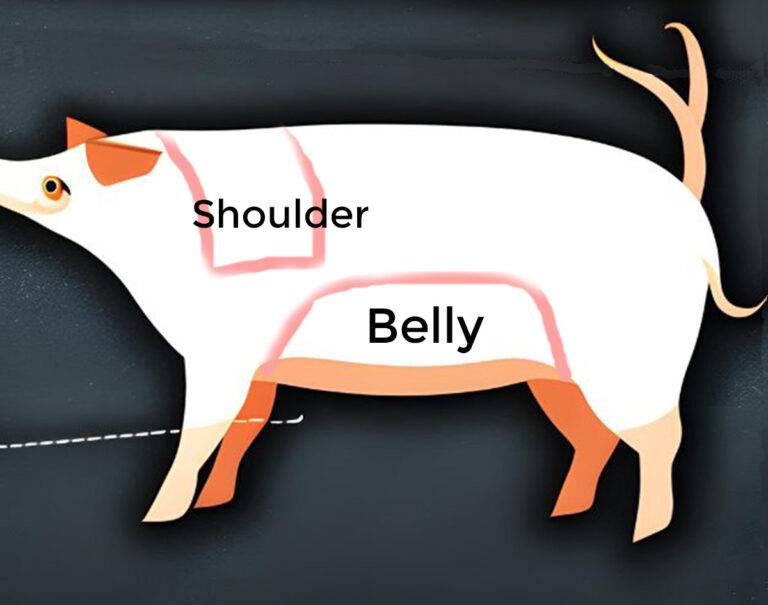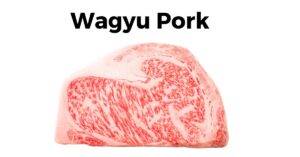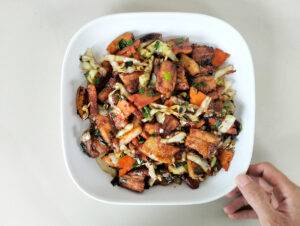Table of Contents
As a food fan and home cook, I have always been fascinated with the versatility of pork. But, when it comes to choosing between pork shoulder and pork belly, it can be a challenging decision.
Both cuts seem similar; they have meat and high fat too. Their cooking method is identical; you can braise, grill, and roast. You can even steam them. Yeah, steaming. However, after cooking so many pork shoulder and pork belly, I found out that both cuts indeed have their unique characteristics, flavor, and slightly different cooking methods.
Today, we will explore the differences between pork shoulder and pork belly, their taste and texture comparison, popular dishes, and cost comparison. By the end, you will know which cut of pork to choose for your next meal.
What is pork shoulder?
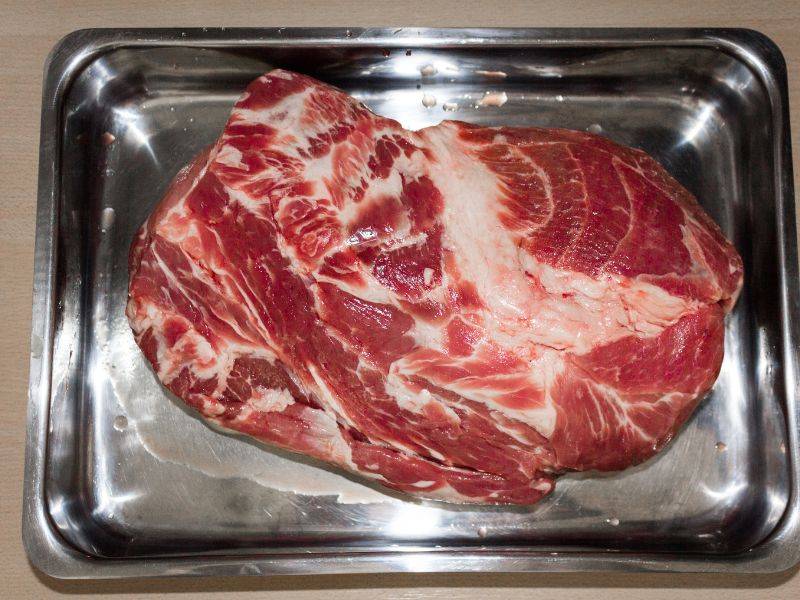
The pork shoulder, also called pork butt, is a cut of pork from the upper shoulder. It is a fatty and tough cut of pork that requires slow cooking to break down its connective tissues and tenderize the meat. This cut is ideal for slow cooking methods such as smoking, roasting, or braising.
However, surprisingly, you can also fast cook this butt too. In a minute, you will know how to do this. Pork shoulder is also budget-friendly and widely available in most supermarkets. One of the most significant advantages of pork shoulder is its versatility.
This part can be used in various dishes, including pulled pork, carnitas, and pork stews. The fatty content of pork shoulder also makes it ideal for barbecuing or smoking, as it can withstand long cooking times without drying out. When cooked properly, pork shoulder has a rich and succulent flavor.
What is pork belly?
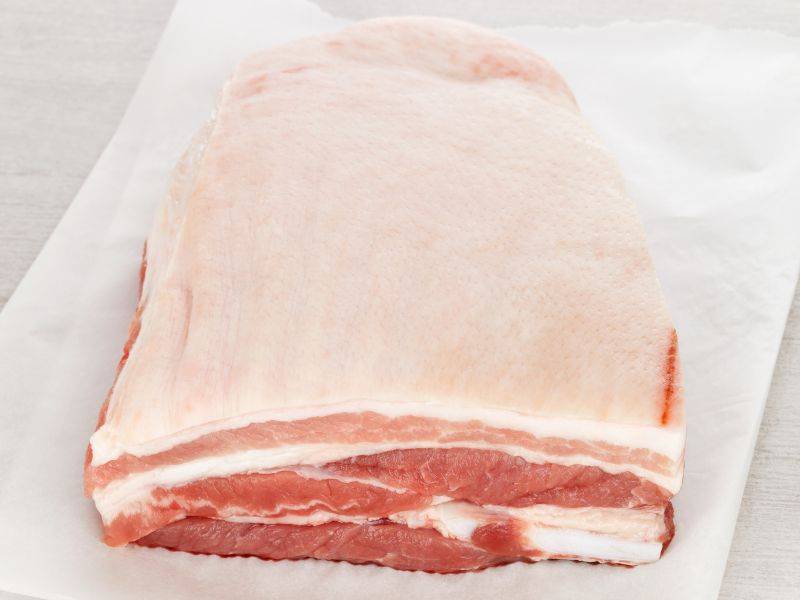
A pork belly is a cut of meat from the pig’s stomach. The Chinese call this three layer pork 三层肉 (san ceng rou) because it has three distinct layers of meat: the skin, the fat, and the meat itself.
It is a popular cut in Asian Cuisine. Pork belly is a versatile meat that can be cooked in different ways, such as roasting, grilling, and frying. One of the unique characteristics of pork belly is its high-fat content, which gives it a rich buttery flavor. The fat also adds moisture and tenderness to the meat, making it also ideal for slow-cooking methods such as roasting or braising.
Flavor and texture comparison between pork shoulder and pork belly
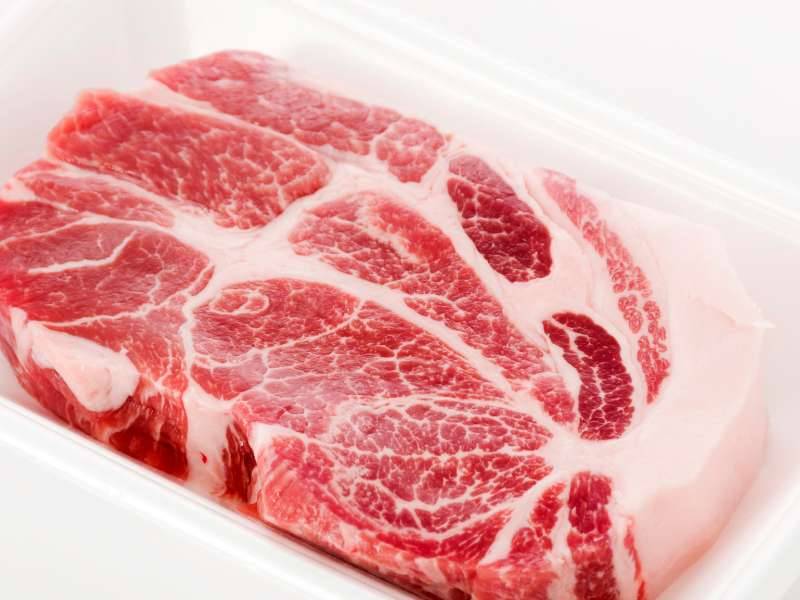
Regarding flavor and texture, pork shoulder and pork belly are pretty different. Pork shoulder has a rich and savory flavor with a slightly chewy texture. The connective tissues in this cut of meat give it a hearty and meaty taste, which makes it ideal for slow cooking methods if you cook it on a big slab.
Pork belly, however, has a rich buttery flavor with a soft and tender texture. The high-fat content in this pig cut gives it a melt-in-your-mouth texture.
When cooked, the texture of pork shoulder should be fork tender and soft, but pork shoulder steak should be crispy outside, just like a ribeye steak. In contrast, when cooked, pork belly should be tender and a bit chewy in texture.
That is why we adjust the cooking method accordingly. Pork shoulder benefits from slow cooking methods such as smoking or braising. In contrast, pork belly is best roasted or grilled to bring out its unique flavor and texture.
Cooking methods for pork shoulder and pork belly
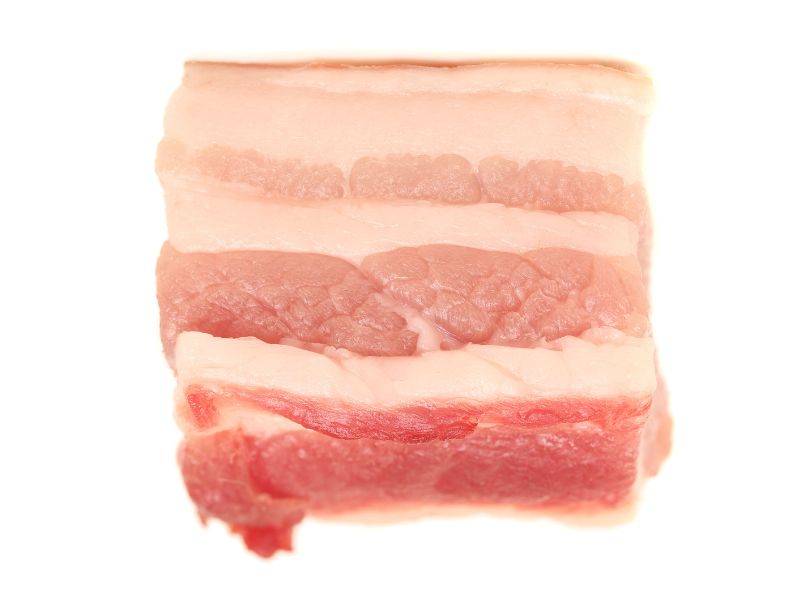
Pork shoulder and pork belly require different cooking methods to achieve the best results. Pork shoulder is a tougher-cut meat that is best cooked slowly to break down its connective tissues and make it tender. This can be achieved through smoking, roasting, or braising.
Pork shoulder: It can be cooked in various ways, but smoking is one of the best methods. This method involves slowly cooking the meat over low heat for a couple hours until it is tender and juicy. Pork shoulder can also be roasted in the oven or braised slowly with vegetables and herbs. Pretty much everything is low heat.
However, when you cut it into smaller steak sizes. You can cook a pork shoulder steak anywhere from 10 minutes in the air fryer or pan fry with high heat. Pretty versatile.
Pork belly: One of the most popular ways to cook pork belly is by roasting it. This method involves seasoning the meat with herbs and spices and roasting it in the air fryer or oven until it is crispy on the outside and tender on the inside. Pork belly can usually be cooked with higher heat.
However, those are just suggested ways of cooking. It does not mean that pork belly can’t be smoked and braised. I braise a lot using pork belly. Pork belly is more tender, the time it required to braise is significantly shorter.
Unfortunately, when it comes to steak, unlike pork shoulder, there is no pork belly steak due to the texture of the meat. The closest resemblance to a steak that I can offer is pork belly strips. Check out my recipe here, “Crispy Air Fryer Pork Belly Strips – BBQ inspired.”
Popular pork shoulder dishes

Pulled pork is a popular dish made from pork shoulder that is slow-cooked until it is fork-tender. Pulled pork can be used in sandwiches, tacos, or as a main dish with barbecue sauce.
Another popular dish made with pork shoulder is carnitas. This Mexican dish involves slow-cooking the meat with spices and citrus until tender and juicy. Carnitas can be served in tacos, burritos, or topped on rice bowls.
Pork stews are also a popular dish made with pork shoulder. This hearty and comforting dish simmers the meat with vegetables and spices until tender and flavorful. Pork stews can be served with crusty bread or over-mashed potatoes.
Popular pork belly dishes
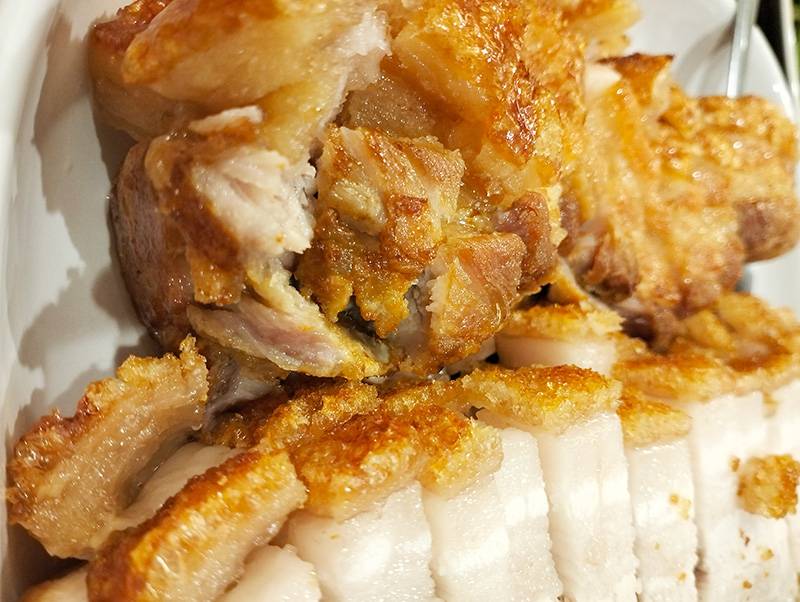
Pork belly is used in various dishes in Asian Cuisine. One of the most incredible dishes made with pork belly is Korean BBQ. This dish involves marinating the meat with a sweet and savory sauce and grilling it until it is crispy and tender on the inside. No doubt, Korean BBQ has always been famous all these days.
Another popular dish made with pork belly is Chashu. This Japanese dish involves slow-cooking the meat with broth and vegetables until tender and flavorful. Pork belly is also a popular topping for ramen bowls.
Excellent. Pork belly bao is a popular street food in China. This dish involves steaming the meat until it is soft and tender and serving it in a fluffy bun. Pork belly does not always have to become an Asian dish. Check out my other recipe, which I transformed into Italian, “The Italian-inspired Passata sauce braised pork belly.”
Cost comparison between pork shoulder and pork belly
When it comes to the cost, pork shoulder is generally more affordable than pork belly. This is because pork shoulder is a tougher and less desirable cut of meat, while pork belly is a highly sought-after cut in Asian Cuisine.
The cost of pork shoulder varies depending on the region and the cut of meat. It is generally more affordable than other cuts of meat, making it an excellent option for budget-conscious home cooks.
Pork belly, on the other hand, is more expensive than pork shoulder due to its high demand in Asian Cuisine. However, it is still a relatively affordable cut of meat when compared to other premium cuts, such as ribeye or filet mignon. Nowadays, I shift most of my focus from ribeye to pork belly.
Conclusion: Pork shoulder vs pork belly – which one is the winner?
In conclusion, pork shoulder and pork belly have unique characteristics, flavors, and cooking methods.
Pork shoulder is a tough and fatty cut of meat that needs slow cooking to break down its connective tissues and tenderize the meat. Pork shoulder is so versatile cut that it can be cooked in many different dishes, such as pulled pork, carnitas, and pork stews.
Pork belly, in contrast, is a fatty and tasty cut of meat that can be cooked in various ways, including roasting, grilling, and frying. It is a popular cut in Asian Cuisine and is used in Korean BBQ, ramen, and pork belly bao dishes. Ultimately, the choice between pork shoulder and pork belly comes down to personal preference and the dish you plan to make.
However, both cuts are delicious and offer their unique flavor and texture. Why don’t you try both out and tell me what you think? If you interested learning about the difference between pork jowl and pork belly. Check out “Pork Jowl vs Pork Belly“.

